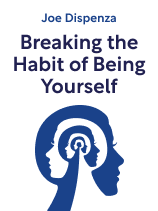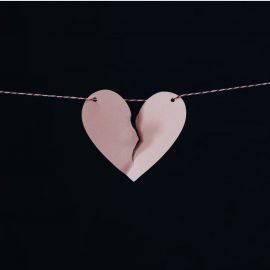

This article is an excerpt from the Shortform book guide to "Breaking the Habit of Being Yourself" by Joe Dispenza. Shortform has the world's best summaries and analyses of books you should be reading.
Like this article? Sign up for a free trial here.
Do you want to become a different person? How can you break free from your old, self-sabotaging patterns and become the person you’ve always wanted to be?
According to Joe Dispenza, to become a different person, you must break the habits that form your current personality and form new ones that support who you want to be. In his book Breaking the Habit of Being Yourself, he recommends a four-step meditation to help you unlearn your self-sabotaging habits and create a new you.
With this in mind, here’s how to become a different person, according to Joe Dispenza.
Breaking the Habit of Being Yourself
In Breaking the Habit of Being Yourself, Joe Dispenza explains how to become a different person and manifest the life you want using his four-step meditation. Over time, Dispenza claims, your body will memorize how to perform these steps, and they’ll become a part of your natural personality.
Step 1: Relax Your Brainwaves
The first step Dispenza describes is a process he calls induction. This is a process you’ll use at the beginning of each meditation session to put yourself in a state of calm, characterized by low-range brainwaves. This is the same state that hypnotists put people in when performing hypnosis. It primes you for the meditation process and builds the foundation for the steps that follow.
Your brain’s electrical activity can occur at different wave frequencies, and these frequencies reflect your state of mind and how attuned you are to the outside world. High wave frequencies mean you’re alert and thinking, and low wave frequencies mean you’re calm and not as cognitively active. Let’s look at each wave frequency.
- Beta: As adults, we spend most of our time in the high-frequency beta state, consciously thinking and processing the stimuli around us using our neocortex.
- Alpha: When we slow our thinking and start to tune out sensory stimuli, we slip into lower-frequency alpha waves where we’re in an imaginative state that helps us learn and retain new information.
- Theta: In theta, our brainwave frequency slows until we’re practically half-asleep, with the conscious mind being awake while the body is in a close-to-sleep state. The conscious and subconscious minds are no longer separated.
- Delta: Delta is the lowest wave frequency and occurs when we’re deeply asleep.
How to Change Your Brainwaves
Dispenza describes two methods for lowering the frequency of your brainwaves. These techniques will shift your state of being from one of thinking to one of feeling and put you in touch with your subconscious mind. You’ll perform this and all subsequent steps while seated upright with your eyes closed.
To enter these lower frequency states, focus your attention on the space you’re occupying—both the physical space your body takes up and the space of the room you’re in. You may do this in a top-down technique, where you begin by focusing first on your head and then moving your attention down your body, part by part, until you reach your feet. Then, sense the space your body takes up as a whole, and finally, the space of the room you’re in.
Alternatively, you can use a bottom-up approach, where you begin by sensing the space of the whole room and then sensing the space from your feet up to the top of your head. Dispenza suggests imagining that water is filling the room for this approach.
Step 2: Break Emotional Habits
Once you’ve gained mastery over your brainwave frequencies, you’ll move on to the practice of chipping away at the “self” you’ve constructed for the world. Continue to start each session with the process described in step 1, then add on these steps as well.
To break down the self, first notice and identify the aspects of your self that you want to change. Identify a memorized emotion—or habit—that you want to un-memorize to get closer to the self you envision. Notice and acknowledge how the emotion makes you feel and let yourself feel it deeply rather than suppressing it. Notice how it makes you think and what state of mind it puts you in.
(Shortform note: This kind of self-reflection can be difficult and even painful. As you work to identify the emotions you don’t want to see in yourself, remember that this exercise is not meant to shame or judge you and avoid dwelling unnecessarily on any thoughts that make you uncomfortable.)
Once you’ve identified the habit you want to change, says Dispenza, confess this habit to the universe, or the higher power that encompasses all the energy in and around you, and then say it out loud. By doing so, you’re releasing the energy it takes to hide this emotion from the world. This helps you break your attachment to this habit and close the gap between who you are and who you pretend to be.
The final step Dispenza describes in breaking down the self is to let that habit and its emotion go into the universe and understand that you can’t control the outcome. This step requires you to have faith in the higher power that organizes the universe and to release your desire to control the future. Trust that the universe will provide you with the best solution—probably in a way you could never have seen coming.
(Shortform note: In The Power of Positive Thinking, Norman Vincent Peale also suggests that appealing to a higher power or god will help you achieve your goals. He emphasizes that doubt of any kind will hinder this process and recommends that you avoid saying or even thinking doubtful thoughts.)
Step 3: Break Behavioral Habits
Once all the steps above have become second nature to you, you can move on to the process of breaking your old habits. To do this, notice the behaviors that accompany the emotions you’ve memorized and look for these behaviors any time they happen. List the behaviors that you see in response to the emotion you’re un-memorizing and memorize this list so that you can always see them when they come up.
Now, says Dispenza, anytime you notice these behaviors, say “Change!” out loud to train yourself out of those behaviors. Eventually, you’ll break these habitual behaviors and move closer to the self you want to be.
(Shortform note: In The Power of Habit, Charles Duhigg offers some additional tips for breaking bad habits: He suggests identifying the different triggers that cause you to engage in your bad habit and rearranging your life to avoid these triggers. He also suggests identifying what reward you are getting from that bad habit and substituting a different reward to try to circumvent the bad habit. For example, if you feel the need to smoke a cigarette because it will make you feel less stressed, but you decide to take a walk instead, you may feel afterward like you don’t need the cigarette because the walk already provided the reward of reduced stress.)
Step 4: Form New Habits
Now that you’ve unlearned the habits of your old self, Dispenza explains, you’ll work on forming new habits that you want to see in yourself. First, identify these new habits you want by asking yourself what your ideal self is and how you want to think, act, and feel. As you meditate, practice this new self on a daily basis so that you build the neural pathways that make up that self.
(Shortform note: Dispenza’s other work expands on the possibilities to change by using his meditation system. In his workshops, Dispenza has suggested that participants can change not only their habits and personal attributes, but also things such as their ability to get pregnant when having fertility issues.)
After you finish each meditation session, you should feel like a different person. The meditation isn’t effective if you find yourself in the same state you were in before you meditated. If you’re doing it correctly, you’ll see results: You’ll see changes in your life that match up with your thoughts and intentions as you send out signals into the universe and manifest the potential future you want.
(Shortform note: The idea that if you don’t see results, you’re doing it incorrectly is a type of circular reasoning. Dispenza suggests that this system will work for everyone as long as they do it correctly, but if the only way to know you’re doing it correctly is if you see results, then that suggestion is impossible to disprove.)

———End of Preview———
Like what you just read? Read the rest of the world's best book summary and analysis of Joe Dispenza's "Breaking the Habit of Being Yourself" at Shortform.
Here's what you'll find in our full Breaking the Habit of Being Yourself summary:
- How your habits are keeping you from growing
- How to unlearn your harmful habits to create a new you
- A four-step meditative practice to help you learn new habits






